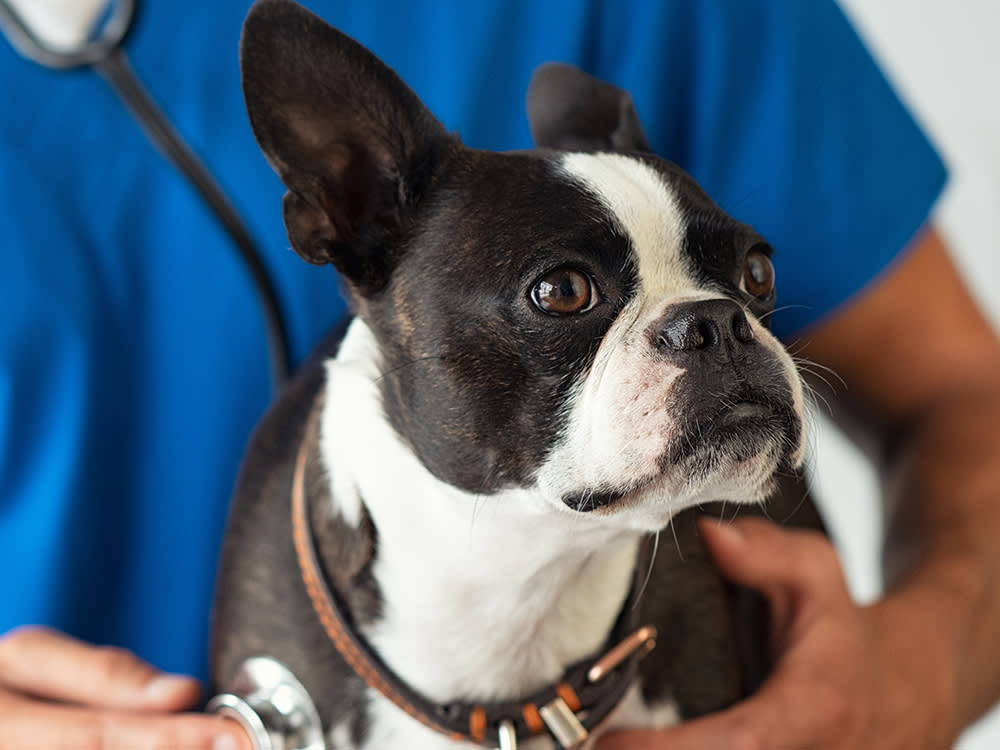13 Tips for Saving Money at the Vet
Ways to lower your bill—without compromising your pet’s health.
Finding out that your pet is sick is the worst — and the emergency visits never come at good times. You want to provide your dog or cat with the best care possible, but vet visits can add up. The good news is that there are a number of ways in which you can save money at the vet while still giving your pet the care they deserve. By focusing on preventative care through regular check-ups, at-home maintenance, and keeping your pet’s vaccinations current, you’ll be more likely to avoid costly emergency bills.
You can also try considering pet insurance or wellness plans to offset your average vet visit costs and routine expenses. And don’t hesitate to discuss financial concerns with your veterinarian; they might offer payment plans or more affordable treatments as a way to help with your bills without compromising your pet’s health. The following cost-saving tips will help you the next time you find yourself wondering just why your cat or dog’s vet visit bill is so much.
Why can the vet be so expensive?
It’s a question every pet parent asks themselves. One reason is because of veterinary medicine’s increasing standards, which are now approaching those of human medicine. This is a good thing — our pets are living longer, healthier lives — but it does understandably lead to a subsequent rise in costs.
At the time of this writing, the average routine vet visit cost for dogs in the U.S. ranges from $70 to $174, while for cats, it can be anywhere from $53 to $124, per CareCreditopens in new tab.
13 tips for saving money at the vet
1. Get pet insurance.
Pet insurance is increasingly recommended by veterinarians, especially if you are inclined to take the “do everything possible” approach when it comes to your pet’s health. Most providers will reimburse 80 percent of your out-of-pocket expenses.
If you do the math, you’ll likely find that medical insurance for your pet makes financial sense in the long run. Before you sign on the dotted line, make sure you are aware of the medical conditions (pre-existing diseases, inherited disorders) that will be excluded.
2. Research wellness plans via your vet.
Wellness plans are an increasingly common development in veterinary office offerings and are a good way to manage the costs associated with your pet’s wellbeing. They are bundled packages of routine veterinary services offered at a discounted rate, and that can be purchased on a monthly or annual basis. Talk to your vet to see if they might offer a wellness plan to you and your dog or cat.
3. Keep up preventative care.
Doing so will cost you way more in the long run, trust us. Preventative care — annual exams, blood work, vaccines, spaying/neutering (dog/cat) , dental care (dog/cat), and generally staying on top of every limp, lump, and bump — is far more affordable than treating a progressed illness. For example, administering a heartworm preventive to your dog (or outdoor cat) is less expensive for you (not to mention, far safer) than treating heartworm infection.
4. Look into emergency vet bill assistance.
Certain organizations will try and help out with emergency vet bills in the form of grants, resources, and emotional support. Look for national programs like Red Rover Relief Careopens in new tab, which offers urgent care grants, or programs local to your state.
5. Consider low-income vet clinics.
Many cities offer clinics featuring reduced price veterinary care or financial assistance to help pay for your pet’s routine or emergency care. Try using keywords like “low-income” or “reduced cost” in your search to help you find them.
6. Shop around for medication and pet food.
Oftentimes, buying certain prescriptions online or buying food in bulk either online or in-person can help you find discounts or sales that will help lower the costs of these essential items. Sometimes, you can also find free food provided by resources in your community.
7. Lay your financial cards on the table when talking to your vet.
Yes, this is difficult. Discussing fleas is one thing; having a candid conversation with your vet about your bank account is a whole other ball game. But such a dialogue can open doors to options that make better financial sense.
There is rarely only one way to diagnose or treat a disease, and regardless of your financial status, you’re entitled to an explanation of the risks and benefits of every single option. Also, while pet insurance might not make sense when your pet is healthy, you’ll be thankful for it if your dog or cat falls ill.
8. Request a written estimate for veterinary services before they’re provided.
No one likes getting a bill that’s got a zero on the end that they didn’t expect. How else can you know if your bill will be $200 or $2,000? With an estimate in hand, you will avoid the element of surprise and won’t end up paying for things that are unnecessary.
9. Kick the once-a-year vaccine habit.
Some vaccinations, such as for parvo and distemper, provide a minimum of three years’ worth of protection once the puppy or kitten series has been completed. If your vaccine-reminder card suggests otherwise, call your vet to double-check and make sure you are vaccinating your pet frequently enough.
10. Feed your pet the right amount.
Many dogs and cats are overweight. Ask your vet if your pet is at a healthy weight. If they think your pet could lose a few pounds, try cutting back, splitting meals into smaller portions, or switch to a healthier diet. Not only will this new habit translate into cost savings, it will result in a healthier pet, and a healthier pet translates into fewer veterinary bills.
11. Investigate options for paying your veterinary bills.
The clinic administrator may be willing to barter, or you could look into a line of credit that can be used to pay for veterinary expenses, such as CareCreditopens in new tab. They are as easy to apply for as a department store credit card, and they usually don’t charge service fees or interest for the first few months. This may be financially advantageous, compared to paying the bill via your usual credit card. Ask your vet hospital staff if they have an association with such a credit lender.
12. Price shop for your pet’s prescriptions.
If the medication prescribed is a human drug (such as Prozac for pet anxiety), compare the human pharmacy price to what your veterinary hospital would charge. Big-box or chain pharmacies purchase medications in bulk and can pass the savings on to you. For example, Costco prices are usually among the lowest, and some human pharmacies offer substantial AAA discounts for pet prescriptions.
For veterinary prescription items your dog receives on a regular basis (such as heartworm preventive, flea and tick control products, and prescription diets), you might find the best savings via online pharmacies. Just do your due diligence and make sure it’s a reputable one — there are tons of dangerous knockoffs online (don’t buy heartworm preventatives on Amazon). And yes, you’ll still need your veterinarian’s authorization. You can ask for a written prescription and have it filled as you would your own, or you can contact an online pharmacy with your request and they will request authorization from your vet.
13. Explore all your options for affordable vet care.
Access to affordable veterinary care can be a challenge for many pet parents, particularly those living in areas without many veterinary clinics. Some veterinary clinics and local shelters maintain an emergency fund to help pet parents who find themselves in an urgent situation with their pet. Your community may also have a low-cost option for spay/neuter surgeries, vaccines, or other diagnostic needs. Your local shelter can help you find any available options.
If you can’t afford to properly care for your pet, apply for a donation from a pet health assistance organization (a comprehensive list can be found at speakingforspot.comopens in new tab) or, as a last resort, r ehome your petopens in new tab with a financially secure family. Exploring your options might just save a life and will do wonders for your peace of mind.
References
Becker, Michelle, et al. “Is Pet Health Insurance Able to Improve Veterinary Care? Why Pet Health Insurance for Dogs and Cats Has Limits: An Ethical Consideration on Pet Health Insurance.” Animals, vol. 12, no. 13, 4 July 2022, p. 1728, www.mdpi.com/2076-2615/12/13/1728opens in new tab, https://doi.org/10.3390/ani12131728opens in new tab.
“What Is CareCredit? | CareCredit.” www.carecredit.com, 2023, www.carecredit.com/vetmed/costs/opens in new tab. Accessed June 17, 2025.
Williams, Angelica, et al. “The Impact of Pet Health Insurance on Dog Owners’ Spending for Veterinary Services.” Animals, vol. 10, no. 7, 9 July 2020, p. 1162, https://doi.org/10.3390/ani10071162opens in new tab.










